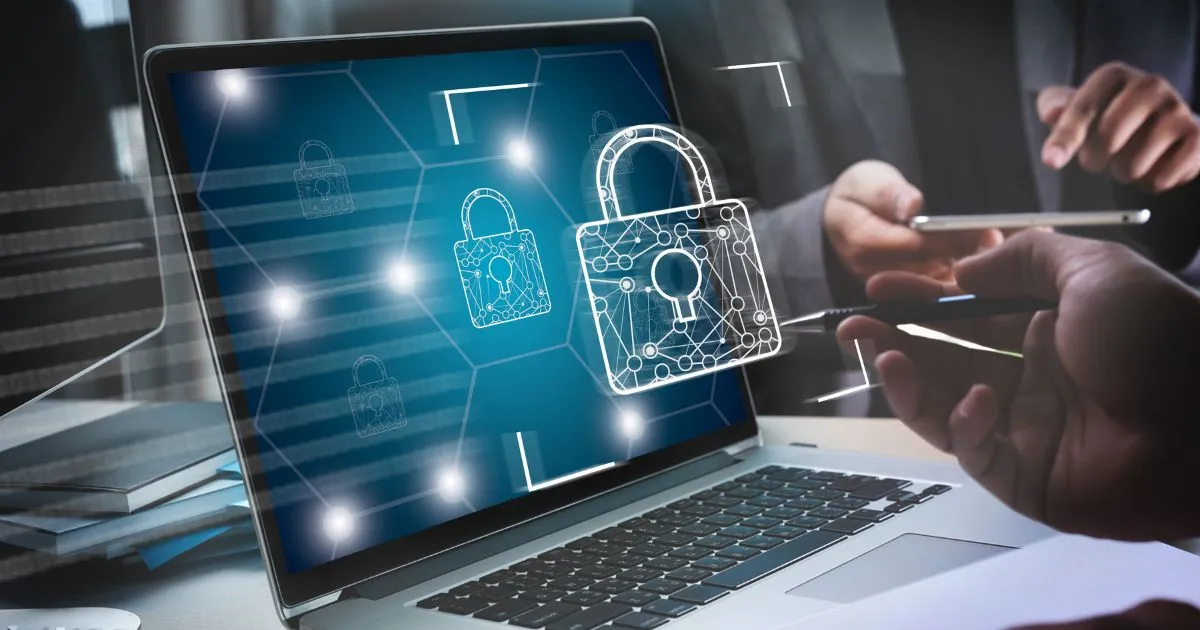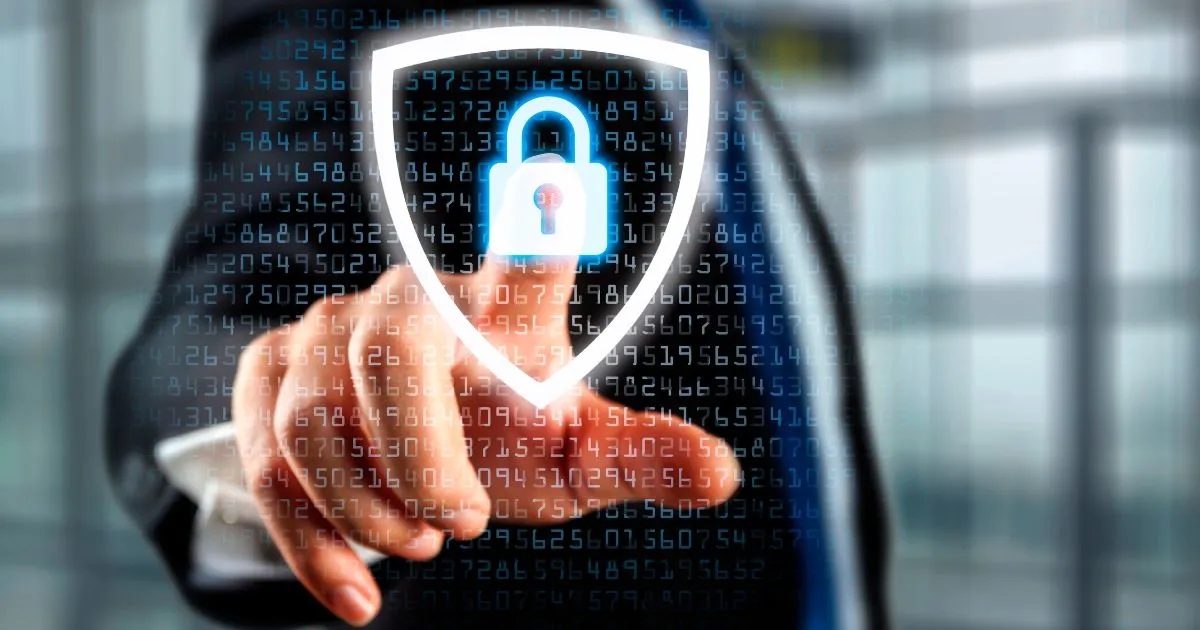Safeguarding Secrets: How Do You Keep Data Secure When Employees Are Working From Home?

The shift to remote work has revolutionized the modern workplace, offering flexibility and convenience for employees around the globe. However, this transition also presents unique challenges, particularly when it comes to data security. With employees accessing sensitive information and company systems outside the traditional office environment, it’s crucial to implement robust measures to protect confidential data. (How Do You Keep Data Secure When Employees Are Working From Home?)
Understanding the Risks: Threats Lurking in the Shadows
Before diving into solutions, let’s acknowledge the potential data security risks associated with remote work:
- Unsecured Networks: Home Wi-Fi networks might lack enterprise-grade security, leaving them vulnerable to cyberattacks.
- Phishing Scams: Remote employees are prime targets for sophisticated phishing emails designed to steal login credentials.
- Lost or Stolen Devices: Laptops and mobile devices containing sensitive data are susceptible to loss or theft, potentially exposing confidential information.
- Shadow IT: Employees might use unauthorized cloud storage or applications, creating blind spots for IT security teams.
- Insider Threats: Malicious actors within the organization can exploit remote work arrangements to gain unauthorized access to data.
Understanding the Risks: Threats Lurking in the Shadows
Before diving into solutions, let’s acknowledge the potential data security risks associated with remote work:
Threat |
Description |
| Unsecured Networks | Home Wi-Fi networks might lack enterprise-grade security, leaving them vulnerable to cyberattacks. |
| Phishing Scams | Remote employees are prime targets for sophisticated phishing emails designed to steal login credentials. |
| Lost or Stolen Devices | Laptops and mobile devices containing sensitive data are susceptible to loss or theft, potentially exposing confidential information. |
| Shadow IT | Employees might use unauthorized cloud storage or applications, creating blind spots for IT security teams. |
| Insider Threats | Malicious actors within the organization can exploit remote work arrangements to gain unauthorized access to data. |

Building a Fortress: Essential Strategies for Data Security
Now, let’s explore some key strategies to mitigate these risks and ensure data remains secure even with a remote workforce:
Employee Education and Awareness:
- Regular cybersecurity training: Equip employees with the knowledge and skills to identify and avoid phishing scams, malware, and other threats.
- Data security policies and procedures: Clearly define acceptable use policies for company data, devices, and applications.
- Open communication: Encourage employees to report suspicious activity or potential security breaches promptly.
Strategy |
Description |
| Regular cybersecurity training | Equip employees with the knowledge and skills to identify and avoid phishing scams, malware, and other threats. |
| Data security policies and procedures | Clearly define acceptable use policies for company data, devices, and applications. |
| Open communication | Encourage employees to report suspicious activity or potential security breaches promptly. |
Network Security and Device Management:
- Secure home Wi-Fi networks: Require employees to use strong passwords and encryption protocols on their home networks.
- Company-issued devices: Provide encrypted laptops and mobile devices with pre-configured security settings.
- Remote access protocols: Implement secure remote access solutions like two-factor authentication and virtual private networks (VPNs).
- Data encryption: Encrypt sensitive data at rest and in transit to protect it from unauthorized access.
Strategy |
Description |
| Secure home Wi-Fi networks | Require employees to use strong passwords and encryption protocols on their home networks. |
| Company-issued devices | Provide encrypted laptops and mobile devices with pre-configured security settings. |
| Remote access protocols | Implement secure remote access solutions like two-factor authentication and virtual private networks (VPNs). |
| Data encryption | Encrypt sensitive data at rest and in transit to protect it from unauthorized access. |

Software and Application Security:
- Patch management: Regularly update operating systems, applications, and firmware on all devices to address security vulnerabilities.
- Cloud security: Choose reputable cloud service providers with robust security measures and access controls.
- Multi-factor authentication: Implement multi-factor authentication for all cloud applications and sensitive systems.
- Data loss prevention (DLP): Consider DLP solutions to monitor and restrict the transfer of sensitive data.
Strategy |
Description |
| Patch management | Regularly update operating systems, applications, and firmware on all devices to address security vulnerabilities. |
| Cloud security | Choose reputable cloud service providers with robust security measures and access controls. |
| Multi-factor authentication | Implement multi-factor authentication for all cloud applications and sensitive systems. |
| Data loss prevention (DLP) | Consider DLP solutions to monitor and restrict the transfer of sensitive data. |
Monitoring and Incident Response:
- Security monitoring: Continuously monitor network activity and system logs for suspicious behavior.
- Incident response plan: Have a defined plan for identifying, containing, and responding to security incidents.
- Regular backups: Regularly back up critical data to ensure recovery in case of a cyberattack or data loss.
Strategy |
Description |
| Security monitoring | Continuously monitor network activity and system logs for suspicious behavior. |
| Incident response plan | Have a defined plan for identifying, containing, and responding to security incidents. |
| Regular backups | Regularly back up critical data to ensure recovery in case of a cyberattack or data loss. |
Beyond the Basics: Additional Security Considerations
For organizations handling highly sensitive data or facing advanced threats, consider these additional measures:
- Zero-trust security: Implement a zero-trust security architecture that verifies every user and device before granting access.
- Endpoint detection and response (EDR): Deploy EDR solutions to detect and respond to malicious activity on devices in real-time.
- Data encryption at rest and in transit: Encrypt data at rest on devices and in transit between devices and applications.

Frequently Asked Questions (FAQs) on Data Security for Remote Work:
Q: What are the biggest challenges to data security with remote work?
A: Unsecured networks, phishing scams, and insider threats are some of the main concerns.
Q: What are the essential things employees can do to protect data?
A: Be vigilant about phishing, use strong passwords, and report suspicious activity.
Q: What security measures should companies implement?
A: Secure networks, encrypt data, provide secure devices, and train employees.
Q: How can companies stay up-to-date on the latest data security threats?
A: Subscribe to security advisories, follow industry news, and regularly assess security posture.
Q: What should companies do in case of a data breach?
A: Have a response plan in place, notify affected individuals, and cooperate with authorities.
Q: How do I ensure the security of company data while working from home?
A: Here are some key steps:
- Secure your network: Use strong Wi-Fi passwords and consider a VPN for added protection.
- Protect your devices: Keep software updated, use strong passwords, and enable encryption.
- Be mindful of phishing: Don’t click suspicious links or attachments, and verify sender information.
- Limit personal use: Avoid downloading personal files or using unauthorized cloud storage.
- Report suspicious activity: Inform your IT team immediately if you notice anything unusual.
Q: How do you maintain security when employees work remotely?
A: Companies can implement various measures:
- Provide secure devices and software: Issue encrypted laptops with pre-configured security settings.
- Enforce strong password policies: Mandate complex passwords and regular changes.
- Utilize data encryption: Encrypt sensitive data at rest and in transit.
- Offer security awareness training: Educate employees on cyber threats and best practices.
- Implement remote access controls: Use VPNs and multi-factor authentication for secure connections.
- Monitor network activity: Keep an eye out for suspicious behavior and potential breaches.
Q: How do I keep my data secure while working online?
A: Follow these general tips:
- Use strong and unique passwords for all accounts.
- Enable two-factor authentication whenever possible.
- Beware of public Wi-Fi networks and use a VPN if necessary.
- Download software only from trusted sources.
- Be cautious about what information you share online.
- Keep your software and devices updated with the latest security patches.
Q: How do you maintain confidentiality when working from home?
A: Both employees and companies play a role:
- Employees: Avoid discussing sensitive information in public spaces or on unsecured calls.
- Companies: Clearly define confidentiality policies and procedures for handling sensitive data.
- Everyone: Shred physical documents containing sensitive information securely.
- Use secure communication channels: Opt for encrypted messaging platforms for confidential discussions.
Q: How do you secure employee data?
A: Companies should prioritize these actions:
- Implement data loss prevention (DLP) solutions.
- Restrict access to sensitive data based on job roles.
- Regularly back up data and have a disaster recovery plan in place.
- Conduct security audits and penetration testing to identify vulnerabilities.
- Provide ongoing security training for employees.
Read more article-
1- Is Cyber Security A Good Career For Freshers In India?
2- How Automation Tools Can Boost Your Activity?
3-What Category Best Describes Digital Marketing?
4- Which Category Is Best For Digital Marketing?
5- How Can Automation Help In Improving Production Processes?
6- What Cybersecurity Jobs Pay The Most
7- How Do You Create A Healthy Online Presence For A Business
8- What Are The Two Main Categories Of Digital Marketing?
